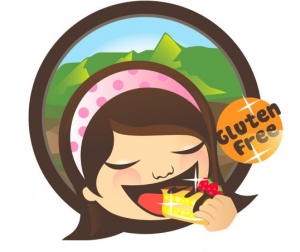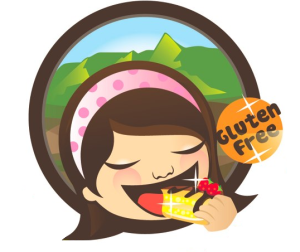

This is another area where there are a tremendous amount of helpful resources across the web, and in most bookstores both offline and online, so I’ve taken some time to highlight the tips I believe will help you to start off. I’ll also link out to most of them so you can read what the experts and enthusiasts believe in more detail when something strikes your fancy.
To start, I am referencing a well-known author and researcher on all things celiac, especially as they relate to our children. Danna Korn is the founder of R.O.C.K (raising our celiac kids) and author of “Living Gluten- Free for Dummies,” “Gluten-Free Cooking for Dummies,” “Wheat-Free, Worry-Free: The Art of Happy, Healthy, Gluten-Free Living,” and “Kids with Celiac Disease: A Family Guide to Raising Happy, Healthy Gluten-Free Children.” She is respected as one of the leading authorities on the gluten-free diet and the medical conditions that benefit from it.
Walk the perimeter
I started to realize that many of the foods dietitians advocate for health are on the outskirts of the grocery store, which spawned my “Avoid the middle aisles” philosophy. Here you will find fresh fruits, vegetables, low-fat dairy, and proteins like meats and meat substitutes. Fresh and frozen fruits and vegetables (and canned unless they contain additives or fillers) are naturally gluten-free. Beware though of vegetables with sauces as they may contain gluten. When it comes to dairy: milk, half and half, butter, margarine, eggs, most cheeses including hard cheeses, and cottage cheese are gluten-free. Check labels or with the manufacturer on processed cheeses, cheese blends and flavored yogurts. Make sure to avoid cheeses with vegetable gum, food starch and preservatives not defined by a gluten-free source. Most poultry is also gluten-free, just avoid poultry that has been breaded or that is self basting. Fresh meats like beef, meat substitutes and fish are safe to eat. Be careful when purchasing sausages and hot dogs as these foods may contain wheat. Stock up on healthy fats like nuts and oils, which are also gluten-free unless coated in a marinade or candy covering.
My general rule of thumb is to avoid the middle aisles as much as possible. Those are your temptation aisles, and although many of us are now lucky enough to have food stores with gluten-free aisles, you run the risk of finding yourself loading up on unhealthy snacks, just because they’re gluten-free. As much as possible, shop the perimeter, and know that what you’re putting in your body will give you good fuel for energy, better metabolism and improved overall health. Plus its delish!
Now on to the experts!
Tips for Living Gluten-Free by Danna Korn
Shopping
- When you go shopping, take your cell phone with you. You may have to call the toll-free number on the package to confirm whether or not it’s gluten-free.
- Plan menus before you go shopping. That way you won’t forget key ingredients, and won’t waste time at the store trying to think of them.
- Buy squeezable or spray-on spreadables. These days, you can buy mayo, margarine, even jelly in squeezable or spray-on containers. While a little pricier, this alternative ensures you won’t end up with crumbs in the jelly jar.
- Careful of the bulk bins. Most bulk bins are quickly contaminated when some well-meaning shopper dips the scooper from the bulk wheat into the bulk quinoa bin. OUCH! All that great quinoa, and it’s now contaminated. Some (but few) stores are aware of this and will separate gluten-containing and gluten-free bulk items – check with your store before making any assumptions.
Reading Labels
- Remember that wheat-free doesn’t mean gluten-free. Gluten is in wheat, rye, and barley (malt). A product can be wheat-free but still contain malt or other forms of gluten. (Gluten-free is, by definition, wheat-free.)
- Spelt is wheat. Some companies refer to it as a “wheat alternative,” but it is not wheat-free or gluten-free.
- Kamut is wheat, also, and must be avoided on the gluten-free diet.
- You’ll be reading lots of labels when you shop. Don’t forget your glasses if you need them for reading.
- Look for a gluten-free logo. Hain Celestial is one company that has created an easy-to-spot logo that will save you lots of time when looking for gluten-free products. The Hain gluten-free logo is the one pictured to the right.
- Sprouted grains are not safe on the gluten-free diet.
- Grasses such as wheat grass or barley grass are gluten-free.
- Don’t feel that a product must say “gluten-free” on the label to be considered safe for you to eat. While it’s oh-so-convenient and helpful that some companies now put a gluten-free logo on their products, there are many foods that are gluten-free but don’t say so.
I also enjoyed this post by Abbie Roth, a freelance writer and academic editor found in Spark People (another good resource!)
Below are some snippets from her article that I found particularly helpful…
Feeding the belief that the gluten-free diet is a phase or a fad is the idea that following a gluten-free diet is inherently healthier than eating normally. Now, if your “normal” diet is fast food and cookies, and your gluten-free diet is whole foods, mainly fruits and vegetables, then yes, the gluten-free diet is healthier. But, just because a food is gluten-free doesn’t mean that it is healthier than its gluten-full counterpart. Do you know how they get gluten-free cookies to taste good? They add copious amounts of sugar and fat. Gluten-free “sandwich” bread can have up to twice as many calories per slice as “regular” bread. Your gluten-free diet can be as healthful or as unhealthful as any gluten-full diet. Eating whole, unprocessed foods is important to good health regardless of your gluten status.
Think about all the food you CAN eat. In my gluten-free journey, I’ve come to appreciate the foods that are naturally gluten-free, such as fish, meat, vegetables, quinoa, millet, rice, fruit, etc. Vegetables are naturally gluten-free. If you were looking for a reason to eat more vegetables… there you go! Think about a trip to your local farmers’ market. On the gluten-free diet, you’ll have to pass up the baked goods, but that’s about it. Right now I can get meat, eggs, cheese, lettuce, strawberries, radishes, asparagus, spinach, carrots, rhubarb, honey, maple syrup, and more. That doesn’t sound like a diet of deprivation to me!
Surround yourself with support. If you think that you might have a gluten problem, I encourage you to talk to your doctor. I suffered for years because I stayed with a doctor who was satisfied with the diagnosis of “stress and IBS.” When I finally went looking for answers to my IBS, I found a doctor who listened and did the extra tests to confirm my gluten issues. And if someone in your life is gluten-free, educate yourself! My friends and family that have made it a priority to learn about celiac disease and gluten intolerance have been a huge part of my support system. A good friend who has a gluten-free food area at her party so that you don’t have to worry about cross-contamination is worth her weight in gold!
Lastly, this post on Cafe Mom is a good “7 tips” approach from several experts:
Regardless of your reasons for adopting a gluten-free diet, here are seven awesome tips from gluten-free experts that will make your transition easier.
1. Avoid sauces unless they are specifically labeled “gluten-free.”
Jennifer Iannolo, CEO of food blog The Gilded Fork, says soy sauce, commercial salad dressings, and other sauces must be avoided — they contain gluten unless they are labeled otherwise because of wheat-based additives.
2. Like a hockey coach, you need subs.
Jen Voss, public relations manager at Buffalo Communications (and a celiac), says you’ll need plenty of quinoa and/or rice in your pantry as a substitute for grains and breads.
3. Make your own seasonings.
Personal trainer and fitness blogger Kate Galliett says this is your key to super-flavorful food.
Many ready-made seasoning blends contain wheat or another form of gluten, so they must be avoided in a gluten-free diet. Instead, you can make your own seasoning mix — and if you do it in bulk, you’ll have it on hand when you’re ready to cook, she says.
4. Instead of avoiding, create. And stay away from processed foods.
In gluten-free cooking, it’s easier to avoid gluten and to create gluten-free items, says Jeanne Sauvage, the blogger behind the Art of Gluten-Free Baking.
“Most food is [gluten-free] — meat, veggies, fruits, rice, potatoes, etc. It’s the stuff you do to these things that are the problem,” she adds. “Many processed things contain gluten or are contaminated with it during processing. So, the closer folks stick to the basic foods, the [fewer] problems they will have with gluten.”
5. Start drinking — and cooking with — wine.
Sauvage also notes wine and distilled liquor contain no gluten because gluten is too big to get through the distilling process. However, some liquors have the mash — like barley or rye — added back in for flavor, which then adds the gluten again.
6. Don’t get discouraged or overwhelmed.
Sherri Konick, who has been on a gluten-free diet for several years, says her main tip is to not get frustrated when first starting out. But, rest assured, Konick says when you get down to it, it’s not that hard.
“If you give up on most processed/packaged foods and start cooking yourself, it’s pretty easy. You buy the safe ingredients and spices, stock your pantry, and you can cook just about anything you want. Breads and pastas are difficult at first but there are alternatives that you quickly get used to.”
She also recommends checking out this unsafe ingredient list from celiac.com.
7. Branch out to new cuisines.
Lindsay Spencer, marketing and communications specialist with the National Peanut Board (and a celiac), says her one tip for those just starting out cooking gluten-free is to explore new cuisines.
“It can feel very confining at first, thinking you can’t eat anything, but there are many cuisines that are naturally gluten-free or offer lots of gluten-free items,” she says. “For instance, Mexican, Spanish, and South American cuisines predominantly use corn instead of gluten. Asian cuisines like Thai and Vietnamese use rice.”
Remember, this is a marathon, not a sprint! You will need to honor the journey ahead of you; live your new and improved life in a way that works for you. There are tons of opinions online, on the shelves, in your doctor’s offices, etc. Ultimately, I found my way to a gluten-free life that suited me, and after some stumbling through it, I realized how much better I felt. Finally, I knew what it was like to feel ‘normal’.
Better yet, I was learning that I felt better than most of my friends and family thanks to my new-found passion and understanding for what it means to live life, healthily!
Comments Closed